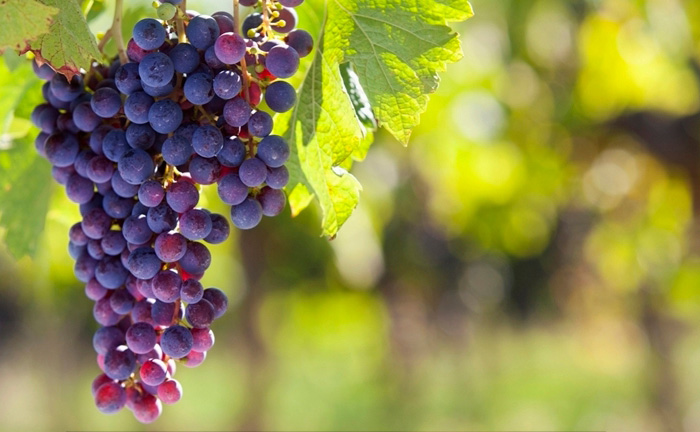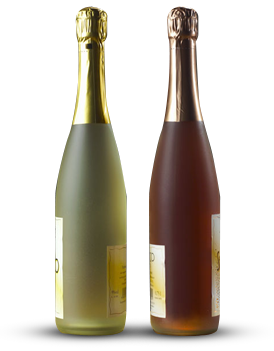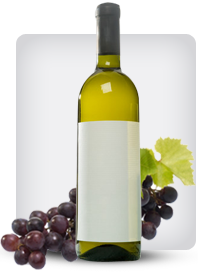

Tag: Guide
How to Decant Merlot Properly: A Guide to Unlocking Complexity
Posted onMerlot, with its signature plush texture and notes of dark cherry, plum, and chocolate, is one of the world’s most beloved red wines. While often approachable in its youth, a proper decanting can transform a good bottle of Merlot into a truly great one. Decanting serves two primary purposes: to separate the wine from any sediment and, more importantly, to aerate the wine, allowing it to “breathe” and express its full aromatic and flavor potential. This guide will walk you through the simple yet impactful process of decanting Merlot like a sommelier.
Why Decant Merlot?
Not all Merlots require decanting, but understanding when and why to do it is key.
- Young Merlot (Aged 1-5 years): The primary reason for decanting a young Merlot is aeration. Exposure to oxygen helps soften firm tannins, integrate oak influences, and unlock the wine’s vibrant fruit and secondary aromas, making it smoother and more expressive on the palate.
- Aged Merlot (Aged 8+ years): With older vintages, the goal shifts. These wines often throw sediment—harmless tartrate crystals and phenolic compounds—that can taste bitter and gritty. Decanting carefully separates this sediment from the clear wine. Aeration for an aged Merlot is typically brief, as its complex bouquet can be fragile and dissipate quickly.
What You’ll Need
- One bottle of Merlot
- A decanter (any style will work)
- A light source (a candle or flashlight)
- A corkscrew
The Step-by-Step Decanting Process
Step 1: Stand the Bottle Upright
If you are decanting an older Merlot (8+ years), stand the bottle upright for 24-48 hours before opening. This allows the sediment to settle at the bottom. For young Merlots, this step is unnecessary; you can proceed directly to decanting.
Step 2: Prepare Your Workspace
Have your decanter clean, dry, and within easy reach. For aged wines, position your light source (a candle is traditional, but a bright flashlight is more practical) directly behind the neck of the bottle. This will illuminate the wine as you pour, allowing you to see the sediment.
Step 3: Open and Pour with Confidence
Remove the capsule and cork cleanly. Now, begin pouring the wine into the decanter in a single, steady, and moderate stream. Hold the bottle over the light source. The key is to pour confidently without hesitation, which helps prevent dribbling.
Step 4: Watch for Sediment (For Aged Wines)
As you pour, keep your eyes fixed on the shoulder of the bottle where it meets the neck. The clear wine will flow through the light, but as you near the end, you will see a dark, cloudy trail of sediment begin to approach the neck. The moment you see this, stop pouring. It’s better to leave a small amount of wine with the sediment than to taint the entire decanter.
Step 5: Let it Breathe
Once the wine is in the decanter, the aeration process begins. The wide base of the decanter maximizes the wine’s surface area exposed to air.
- Young, Bold Merlot: Let it breathe for 30 minutes to 2 hours. Taste it every 20-30 minutes to see how it evolves.
- Older, Delicate Merlot: 15-30 minutes is often sufficient. Over-aerating can cause its nuanced aromas to fade.
How Long Should Merlot Breathe?
| Wine Profile | Recommended Decanting Time |
| Young, Inexpensive Merlot | 20 – 45 minutes |
| Young, High-End Merlot (e.g., from Bordeaux or Napa) | 1 – 2+ hours |
| Aged Merlot (8+ years) | 15 – 30 minutes |
Ultimately, the best judge is your own palate. Decanting is not an exact science, but a tool for personal enjoyment.
Conclusion: The Reward of Patience
Decanting Merlot is a simple ritual that pays significant dividends. By taking a few extra minutes to aerate your wine, you encourage it to shed its initial shyness and reveal the depth, harmony, and complexity the winemaker intended. Whether you’re enjoying a casual weeknight bottle or a prized library vintage, proper decanting ensures your Merlot is experienced at its absolute best.
Merlot Serving Temperature Guide: Unlocking the Wine’s Full Potential
Posted onMerlot is celebrated for its approachable, velvety texture and flavors of dark fruit, chocolate, and herbs. However, serving it at the wrong temperature can mask its elegant profile. Too cold, and its aromas and flavors become muted; too warm, and the alcohol can taste harsh. This guide will help you achieve the perfect serving temperature to fully appreciate this beloved red wine.
The Goldilocks Zone: Ideal Merlot Serving Temperature
The ideal serving temperature for most Merlot is between 60°F and 65°F (15°C to 18°C). This “cellar temperature” range is cool enough to preserve the wine’s freshness and structure but warm enough to allow its complex bouquet to open up and express itself fully.
- Young & Fruit-Forward Merlot: Aim for the cooler end of the spectrum, around 60°F (15°C). This slightly cooler temperature will accentuate the wine’s vibrant fruitiness and provide a refreshing lift.
- Aged & Complex Merlot: Serve closer to 65°F (18°C). The additional warmth will help release the more subtle, developed aromas of leather, tobacco, and earth that come with age.
Why Temperature Matters So Much
| If Served Too Cold (<55°F / 13°C) | If Served Too Warm (>68°F / 20°C) |
| ✅ Aromas and flavors are muted and locked in. | ✅ Alcohol taste becomes overly prominent and “hot.” |
| ✅ Tannins can feel overly bitter and astringent. | ✅ The wine can taste flabby and lose its structure. |
| ✅ The wine may seem simple or one-dimensional. | ✅ Delicate fruit flavors are overshadowed. |
A Practical Guide to Chilling Your Merlot
Most of us store red wine at room temperature, which is often too warm for ideal serving. Here’s how to quickly and effectively bring your Merlot to the perfect temperature.
- From Pantry to Perfect: If your bottle is at room temperature (around 72°F/22°C), place it in the refrigerator for approximately 45 minutes.
- The Ice Bath Shortcut: For a faster method, fill a bucket or large container with equal parts ice and cold water. Submerge the bottle. This will chill the wine in just 15-20 minutes.
- Avoid the Freezer: While tempting, placing wine in the freezer is risky. It can chill the wine unevenly and you risk forgetting it, which can cause the bottle to crack or the wine to freeze.
Final Touches: Decanting and Glassware
To elevate your Merlot experience further:
- Decanting: Decanting younger Merlots for 30-60 minutes before serving helps to soften tannins and unlock aromas. For older vintages, decant gently to separate any sediment.
- Glassware: Use a large, bowl-shaped red wine glass. The wide bowl allows the wine to breathe and directs the aromas toward your nose, enhancing the tasting experience.
By paying close attention to serving temperature, you transform a good bottle of Merlot into a great one. This simple yet crucial step ensures you experience the wine exactly as the winemaker intended—balanced, complex, and profoundly enjoyable.
The pursuit of a great bottle of California Cabernet Sauvignon is a journey through sun-drenched vineyards and meticulous winemaking. While personal taste is paramount, understanding the impact of vintage—the weather conditions of a particular growing season—is key to unlocking the region’s finest expressions. Certain years stand out as benchmarks of quality, offering exceptional balance, complexity, and aging potential. Here is a guide to the best recent vintages for California Cabernet Sauvignon. The Hallmarks of a Great Vintage
Posted onBefore listing specific years, it’s important to know what makes them great. Ideal conditions for Cabernet Sauvignon in California include:
- A warm, consistent growing season to achieve optimal ripeness.
- A lack of extreme heat spikes, which can stress vines and produce overly alcoholic or “jammy” wines.
- A long, gradual fall with cool nights, which helps grapes retain acidity and develop complex flavors.
- Minimal rain during the harvest period to prevent dilution and rot.
Standout Vintages to Seek Out
2018
Widely hailed as a modern classic, the 2018 vintage is one of near-perfection. A long, moderate growing season with no major heat events allowed for a long hang time. The resulting wines are profoundly balanced, with deep, concentrated fruit, refined tannins, and vibrant acidity. They are powerful yet elegant, with immense aging potential. This is a benchmark year to buy with confidence.
2016
Following several drought years, 2016 provided a welcome reprieve with timely winter rains. The season was steady and warm, leading to wines of exceptional structure and purity. Cabernets from 2016 are known for their classic profile: ripe blackcurrant and cassis flavors, firm but polished tannins, and a long, expressive finish. They are approachable now but will continue to evolve beautifully for years.
2013
A legendary vintage that set a high bar for the decade. The 2013 growing season was ideal, with perfect weather from spring through harvest. The wines are intensely concentrated, rich, and powerful, yet they maintain a remarkable sense of balance and finesse. Tannins are abundant but silky. These are cellar-worthy wines that represent the pinnacle of Napa Valley Cabernet.
2019
Similar in quality to 2018, 2019 produced another stellar lineup. The vintage yielded wines that are perhaps slightly more approachable in their youth than the 2018s, with a plush, generous fruit character and supple tannins. They offer incredible drinkability now but possess the depth and structure to suggest a long and prosperous life ahead.
A Note on “Challenging” Vintages
It is worth noting that a vintage deemed “challenging” (such as 2011 or 2017, which were marked by rain and wildfires, respectively) does not mean all wines from that year are poor. In such years, the skill of the winemaker and the location of the vineyard become critically important. Many top producers still crafted outstanding wines by being highly selective with their fruit.
Ultimately, the “best” year is the one that aligns with your palate and purpose. The vintages listed here—2013, 2016, 2018, and 2019—represent a golden era for California Cabernet Sauvignon and offer a superb starting point for any enthusiast or collector.
The Golden Vintages: A Guide to the Best Years for California Cabernet Sauvignon
Posted onFor wine enthusiasts and collectors, California Cabernet Sauvignon represents a pinnacle of New World winemaking. Known for its bold fruit, structured tannins, and remarkable aging potential, the quality of these wines can vary significantly from one year to the next. Understanding the vintage—the annual climatic conditions in which the grapes were grown—is key to unlocking the best bottles. This guide explores the standout years that have defined recent decades of California Cabernet.
What Makes a Great Vintage?
A truly exceptional vintage for Cabernet Sauvignon in California is typically characterized by a long, moderate growing season. Ideal conditions include a warm, but not excessively hot, summer that allows for steady, even ripening. A critical factor is a significant diurnal shift (the difference between day and night temperatures), which helps the grapes retain acidity, preserving balance and freshness in the final wine. The absence of heat spikes, early autumn rains, or widespread wildfires is also crucial, as these events can compromise quality and quantity.
Modern Benchmark Vintages
The following vintages are widely celebrated by critics and collectors alike for their consistent quality across Napa Valley and Sonoma County’s top appellations.
- 2018: A near-perfect vintage. A cool, wet winter was followed by a long, steady summer with few extremes. The resulting wines are celebrated for their profound depth, polished tannins, and vibrant acidity. They are powerful yet elegant, with immense aging potential.
- 2016: Another stellar year, 2016 produced wines of exceptional balance and finesse. A relatively early harvest under ideal conditions yielded Cabernets with intense, pure fruit flavors, refined structures, and beautiful aromatic complexity.
- 2013: Often cited as a modern classic, the 2013 vintage was marked by a warm, dry growing season. The wines are notably concentrated, rich, and powerful, with robust tannic structures that promise extraordinary longevity.
Excellent & Approachable Vintages
While the vintages above are built for the long haul, the following years produced outstanding wines that are often more approachable in their youth, though still capable of rewarding cellaring.
- 2019: A high-quality follow-up to 2018. The wines are slightly more forward and supple, offering generous fruit and a plush texture. They are delicious now but will continue to evolve beautifully.
- 2015: A warm year that yielded opulent, fruit-forward wines with a plush, velvety texture. While they lack the razor-sharp structure of 2013 or 2016, they are immensely pleasurable and expressive.
- 2012: A consistent, solar-powered vintage that produced ripe, generous, and immediately appealing Cabernets. They are known for their hedonistic fruit and smooth tannins.
Vintages to Approach with Discernment
Not every year is a universal success. Vintages like 2011 (notoriously cool and challenging) and 2017 (impacted by heat spikes and wildfires) require more careful selection. While top producers still made excellent wines in these years, the overall consistency across the region was lower.
Final Thoughts for the Collector
While vintage charts provide a helpful roadmap, the producer’s reputation is often the most reliable indicator of quality, especially in more challenging years. The best strategy is to follow esteemed wineries whose style and farming practices you trust. Whether you are seeking a bottle for immediate enjoyment or one to grace your cellar for decades, understanding these landmark vintages will guide you to the very best that California Cabernet Sauvignon has to offer.
Vegan Pinot Noir Options 2025: A Guide to Sustainable and Delicious Wines
Posted onAs the demand for vegan-friendly wines continues to rise, Pinot Noir enthusiasts can rejoice in the growing selection of high-quality, animal-free options. Whether you’re a committed vegan or simply exploring sustainable wine choices, 2025 offers an exciting array of vegan Pinot Noirs that don’t compromise on flavor or elegance. Here’s a curated list of the best options available this year.
What Makes a Wine Vegan?
Traditional winemaking often uses animal-derived fining agents like egg whites, gelatin, or casein to clarify and stabilize the wine. Vegan wines, however, rely on plant-based or mineral alternatives such as bentonite clay, activated charcoal, or pea protein. Look for certifications like “Certified Vegan” or check the producer’s website for confirmation.
Top Vegan Pinot Noir Picks for 2025
1. Domaine Eden Vegan Pinot Noir (Santa Cruz Mountains, USA)
This California gem is crafted with organic grapes and uses no animal products in the fining process. Expect bright cherry notes, subtle earthiness, and a silky finish—perfect for pairing with mushroom-based dishes.
2. Felton Road Pinot Noir (Central Otago, New Zealand)
A biodynamic and vegan-certified wine, Felton Road’s Pinot Noir boasts vibrant red fruit flavors, floral undertones, and a refined structure. Its commitment to sustainability makes it a standout choice.
3. Louis Jadot Bourgogne Pinot Noir (Burgundy, France)
A classic Burgundy now available in a vegan-friendly version, Louis Jadot’s Pinot Noir offers delicate raspberry and spice notes. The winery has transitioned to plant-based fining agents without sacrificing its renowned elegance.
4. The Vegan Vine Pinot Noir (California, USA)
As the name suggests, this wine is explicitly crafted for vegans. With ripe strawberry flavors and a smooth texture, it’s an excellent entry-level option for those new to vegan wines.
5. Meinklang Pinot Noir (Burgenland, Austria)
This organic and biodynamic Pinot Noir is unfined and unfiltered, making it naturally vegan. Its bold, earthy profile with hints of blackberry makes it ideal for hearty plant-based meals.
Why Choose Vegan Pinot Noir?
Beyond ethical considerations, vegan wines often align with organic and biodynamic practices, promoting environmental sustainability. Many vegan Pinot Noirs also emphasize minimal intervention, allowing the true expression of the grape and terroir to shine.
Final Thoughts
Whether you’re dining at a high-end restaurant or enjoying a casual evening at home, the 2025 lineup of vegan Pinot Noirs offers something for every palate. With winemakers increasingly adopting vegan practices, it’s easier than ever to savor exceptional wines that align with a compassionate lifestyle.
Note: Always verify vegan status with the producer, as winemaking practices can change.
popular posts
-

Aging Potential of Premium Pinot Noir: Unlocking the Elegance of Time Among the world’s noble grape varieties, Pinot Noir holds a unique and almost mythical status
12-30 2025Celebrated for its ethereal aromatics, silky texture, and captivating expression of *terroir*, it is often considered the most transparent conduit from vineyard to glass. Read More
-

Food Pairing with Full-Bodied Cabernet Sauvignon Few wines command a table with the authority of a full-bodied Cabernet Sauvignon
12-29 2025With its deep, inky color and powerful structure built on robust tannins, dark fruit flavors, and often a hint of oak, it’s a wine Read More

